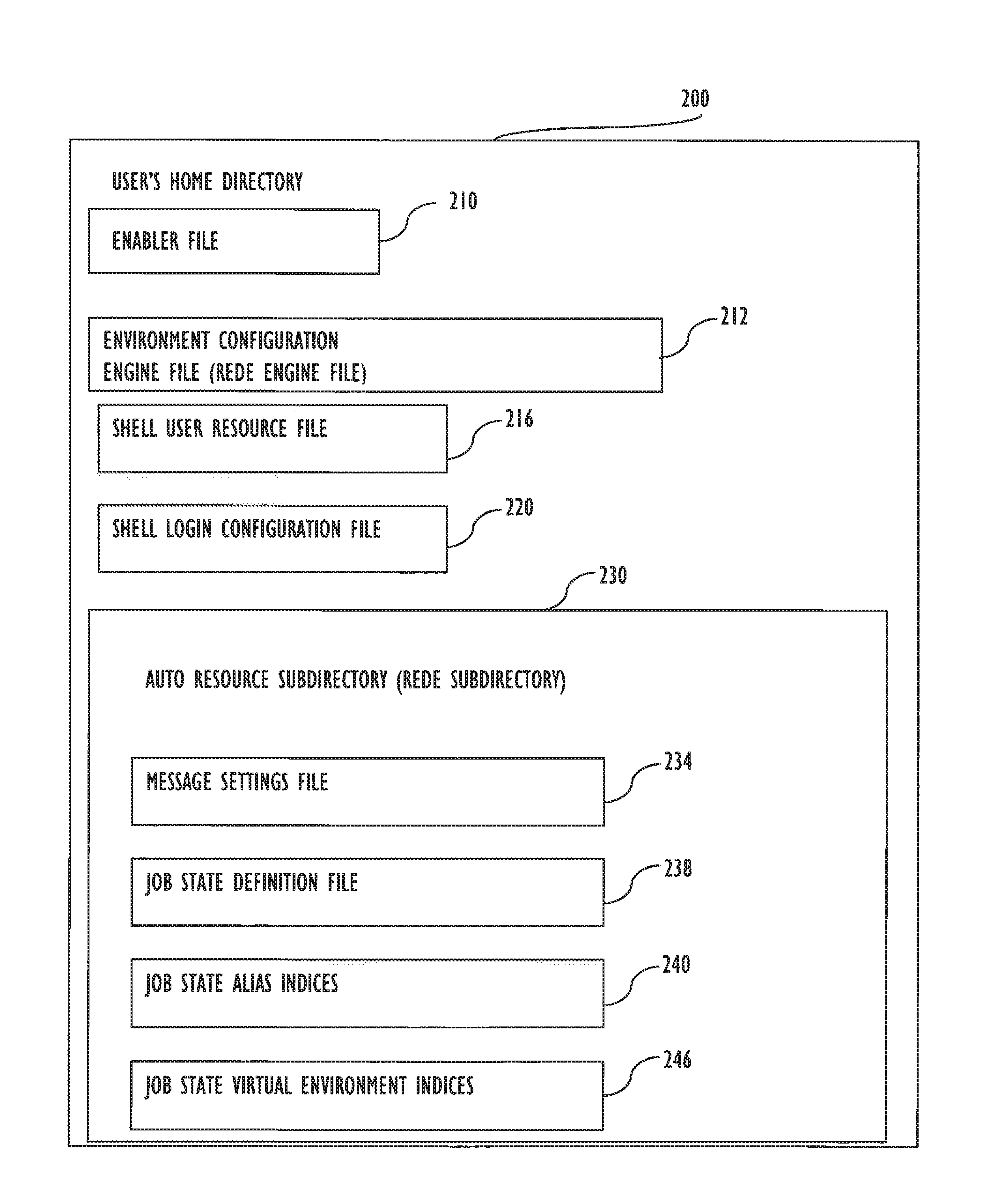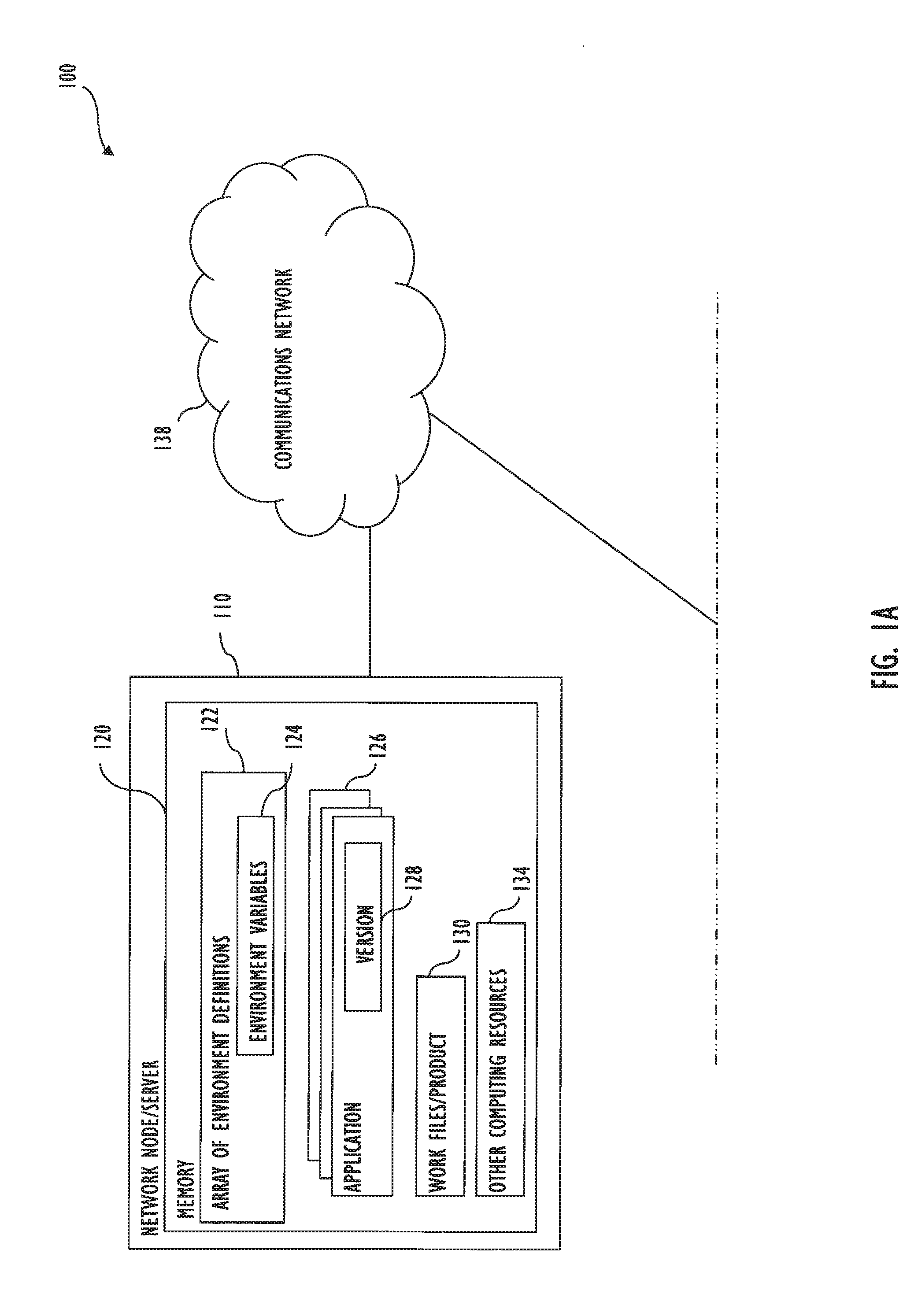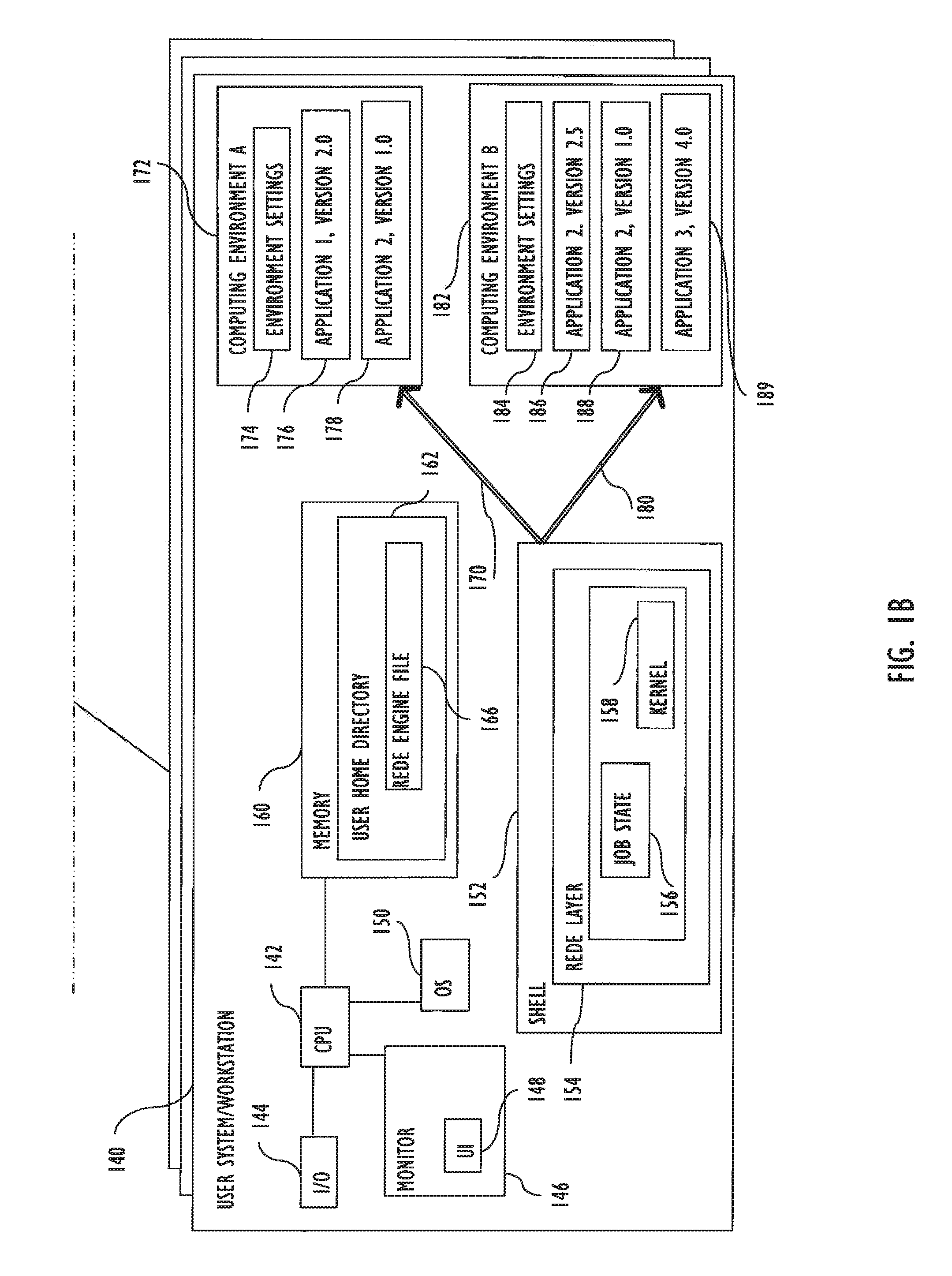Managing shell configurations to dynamically control user computing environments
a dynamic control and shell configuration technology, applied in the field of computer operating and/or processing environments, can solve problems such as performance degradation, lack of program or engine, etc., and achieve the effects of simple and swift control, limited extensibility of management tools, and easy adaptability
- Summary
- Abstract
- Description
- Claims
- Application Information
AI Technical Summary
Benefits of technology
Problems solved by technology
Method used
Image
Examples
Embodiment Construction
[0021]Briefly, embodiments of the present invention are directed to methods and systems for managing the computing environment of users in a computer system such as the computing environment provided to users of client devices or workstations in a networked arrangement. The following examples and description are somewhat tailored to use in the digital film industry such as for allowing a user, such as an animator or others working with digital assets of an animated work, to select a work environment for use in performing a particular task that, in turn, may be related to a particular project or production or even to a process or step in the production pipeline within such a particular project or product (e.g., the work or computing environment is tied to or linked to a job state indicating the project or subtier or lower hierarchical level of such project).
[0022]The computing environment generally is created dynamically in some embodiments by a shell operating to invoke an environme...
PUM
 Login to View More
Login to View More Abstract
Description
Claims
Application Information
 Login to View More
Login to View More - R&D
- Intellectual Property
- Life Sciences
- Materials
- Tech Scout
- Unparalleled Data Quality
- Higher Quality Content
- 60% Fewer Hallucinations
Browse by: Latest US Patents, China's latest patents, Technical Efficacy Thesaurus, Application Domain, Technology Topic, Popular Technical Reports.
© 2025 PatSnap. All rights reserved.Legal|Privacy policy|Modern Slavery Act Transparency Statement|Sitemap|About US| Contact US: help@patsnap.com



